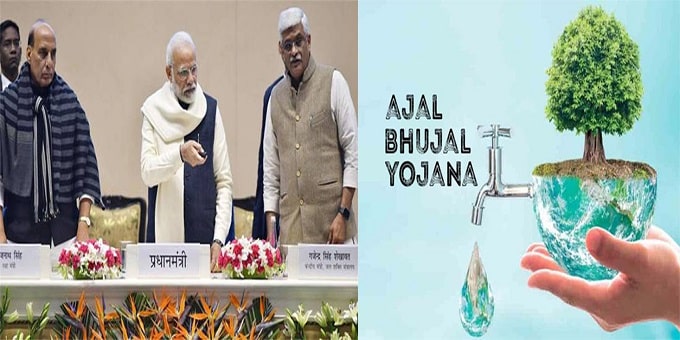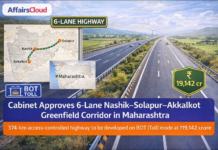On December 25, 2019 the Prime Minister Shri Narendra Modi launched Atal Bhujal Yojana (ATAL JAL) and named the Strategic Tunnel under Rohtang Pass after Vajpayee, in an event held in New Delhi on the birth anniversary of former Prime Minister Atal Bihari Vajpayee. Cabinet approved Atal Bhujal Yojana:
Cabinet approved Atal Bhujal Yojana:
The CCEA approved for implementing Atal Bhujal Yojana (ATAL JAL). It is a central sector scheme with an outlay of Rs 6000 crores and will be implemented for a 5-year period (2020-21 till 2024-2025)
i.Scheme Aim: The aim of the scheme is to improve ground water management. The improvement will be done through community participation in identified priority areas in 7 States, they are Gujarat, Haryana, Karnataka, Madhya Pradesh(MP), Maharashtra, Rajasthan and Uttar Pradesh (UP).
ii.Scheme benefit: The Scheme will benefit nearly 8350 Gram Panchayats in 78 districts of the above mentioned 7 States.
iii.Scheme outlay contribution: Out of the Rs. 6000 crores total outlay, 50% will be given by World Bank as a loan which will be repaid by the central govt. later. The remaining 50% will obtained through Central Assistance from regular budgetary support.
iv.Components of ATAL JAL: There are two major components of Atal Jal. They are as follows:
- Component 1: Institutional Strengthening and Capacity Building Component. This is for strengthening the institutional arrangements for ground water management in the states. It includes ways to improve monitoring networks, capacity building, strengthening of water user associations, etc.
- Component 2: Incentive Component. It is for incentivising the States in achieving groundwater management practices namely, data dissemination, preparation of water security plans, implementation of management interventions through convergence of ongoing schemes etc.
v.Atal jal benefits:
- The Atal jal will benefit in improving the groundwater monitoring networks and also improve capacity building for stakeholders.
- Water budgeting improvement. Enhancing community-led Water Security Plans at Panchayat level.
- Use of groundwater resources efficiently.
vi.Ground water contribution:The groundwater in India contributes to nearly 65% of total irrigated area and also 85% of the rural drinking water supply.
vii.Water connectivity by 2024: PM reiterated that Atal Jal Yojana or the guidelines related to the Jal Jeevan Mission, in providing water to every household in the country by 2024.
- Considering the last 70 years, only 3 crores out of 18 crore rural households have access to piped water supply.
- The Govt also has set a target to deliver clean drinking water to 15 crore homes in the next five years (by 2024) through pipes.
- Both Union and State Governments will spend Rs 3.5 lakh crore on water related schemes in the next 5 yrs.
viii.Initiatives undertaken agency: The Department of Water Resources, River Development & Ganga Rejuvenation under the ministry of Jal Shakti has undertaken the initiative and will be responsible for ensuring ground water resources through ATAL JAL. A top-down & bottom up approach has been adopted in identified ground water stressed blocks of the 7 mentioned states.
Atal Tunnel:
Atal Tunnel (previously known as Rohtang Tunnel), named after India’s Former Prime Minister Atal Bihari Vajpayee, is a highway tunnel being built under the Rohtang Pass in the eastern Pir Panjal range of the Himalayas on the Leh-Manali Highway. At 8.8 km length, the tunnel will be one of the longest road tunnels in India and is expected to reduce the distance between Manali and Keylong by about 46 km.
The tunnel is at an elevation of 3,100 metres (10,171 ft) whereas the Rohtang Pass is at an elevation of 3,978 metres (13,051 ft). The excavation of the tunnel completed in October 2017 when the blasting from south and north ends joined, and the completed tunnel will open in December 2019.
About Jal ministry:
Founded- 2019.
Preceded by- Ministry of Water Resources, River Development and Ganga Rejuvenation in September 1985.
Headquarters- New Delhi.
Union minister- Gajendra Singh Shekhawat.





